“There is only one boss. The customer. And he can fire everybody in the company from the chairman on down, simply by spending his money somewhere else.” (Sam Walton)
Read more inspirational customer service quotes here.
In today’s fast-paced and interconnected world, the bedrock of any successful business lies in its ability to provide exceptional customer service. Whether in a bustling retail environment or an online marketplace, the landscape of customer interactions continues to evolve, presenting both challenges and opportunities for businesses aiming to thrive.
This comprehensive guide navigates the intricate realm of customer service. We delve into the principles, strategies, and innovative practices that drive exceptional customer service experiences. This article aims to equip businesses with the insights and tools necessary to not just meet but exceed customer expectations.
Table of Contents
- Types of Customer Service
- Types of Customers
- What Exactly is Good Customer Service?
- Why Customer Service is So Important for Your Business
- Customer Needs
- Customer Profiles
- Creating a Customer Service Strategy
- Customer Service Management
- How to Improve Customer Service
- Customer Service Skills
- Active Listening Skills for Customer Service
- Empathy in Customer Service
- Collecting Customer Feedback
- How to Deal With Angry Customers
- How to Handle Customer Complaints
- Customer Communication
- Customer Centricity
- Increasing Sales Through Customer Service
- How to Build Better Customer Relationships
- Customer Insights
- Customer Satisfaction
- Customer Satisfaction Index
- Customer Engagement
- Call Handling Skills for Excellent Customer Service
- Customer Service Outsourcing
Types of Customer Service

Customer service is one of the most important differentiating factors that customers look at when choosing between competing companies. No matter how great your products are, customers want to know that you’re ready to help them when they have questions, problems, or just need advice. However there are many types of customer service, and individual consumers will have their own sets of preferences.
With phone or call centre customer service, customers get in-person service without having to trek to a store location. For businesses, there are multiple advantages, including better relationship-building. And there are other advantages. Calls can be recorded, for example, helping businesses to exercise better quality control and verify what happened during interactions. Plus you can outsource, allowing you to offer 24/7 customer service, and scale service in response to demand.
Read more about types of customer service.
Types of Customers

As people, every single individual is unique. But as customers, some people share specific histories and sets of intentions. Knowing who is who helps you to give them what they expect or, better yet, offer them something they didn’t expect but definitely want. Even if you do business online, you’ll get your share of window shoppers. They’re interested enough to take a look at what you do, but they don’t really have any intention to buy and prefer to be unobtrusive. So, what can you do to turn “just looking” into sales?
Just as high-street boutiques work to make their displays enticing, so should you. For online businesses, this means making your storefront an attention-grabber. And, since window shoppers prefer not to interact just yet, make sure that they have all the information they need to evaluate products that catch their eye. List product features unambiguously. Explain their benefits clearly. And, whatever else you do, don’t leave window shoppers in the dark about pricing.
Read more about the types of customers.
What Exactly is Good Customer Service?

It is important to offer your customers a pleasant experience when they’re dealing with your business. Fail to do so, and you’ll not only lose a customer, but gain a detractor. Serve them even better than they expected, and you’ve gained a lifelong supporter. Reputations are built on customer service, and you’d like to make sure yours is among the best.
So, when you get right down to it, what is excellent customer service? Good customer service means being ready to help your customers so that their needs are met, and they are left feeling good about their experience with your businesses. Customer service begins with the people who provide it, and it’s a skilled job. So, the first thing you need to provide your customers with good service is skilled people. You’re looking for people who genuinely like dealing with people, listening to them, and helping them. Personalised attention is another important feature of good customer service. It can’t be faked, and it’s rarer than you might expect.
Read more about good customer service.
Why Customer Service is So Important for Your Business

Many business owners make the mistake of thinking that good customer service is an extra that’s mainly of benefit to the customers themselves. However, it’s extremely important for your business too, and it translates to money in the bank. Excellent customer service often leads to lower acquisition costs as many buyers purchase more than once based on their customer service experience. It can also lead to more referrals as well as positive customer reviews that might just be the deciding factor that converts a new customer. A business that has built a good customer service reputation is also more likely to acquire the best talent when recruiting.
Read more about why customer service is important for your business.
Customer Needs

What customers need depends, to a large extent, on the products they are purchasing. For example, what you need from a breakfast food differs from what you need from a healthcare practitioner. At the same time, customers have preferences that they look for when purchasing a product or using a service. We should distinguish between physical needs and psychological needs. When you buy staple foods, it is because you need them for your survival. Basic foodstuffs fulfil a physical need. However, many of the things we buy, from fashion items to luxury foods or entertainment, fulfil psychological needs.
When we use the term “customer needs” in sales and marketing, we generally do not refer to physical needs. Instead, we are talking about the things customers want from the businesses they support. These go beyond mere survival and enter the realm of preference. When their needs are unsupported, customers will not suffer undue physical harm, but they will stop supporting your business as soon as they find an option that better serves their needs.
Read more about customer needs.
Customer Profiles

From the name, you might think that a customer profile records the traits of a single person who buys from you. While you might apply the term in that way, it can be much more than that. In this context, a customer profile represents everything you can discover about your ideal customer. The Pareto, or 80/20, principle holds true for most businesses. In short, it says that 80 percent of your sales come from 20 percent of your customers. Naturally, these would be the customers you’d most like to attract and retain.
Since the other 80 percent of customers will likely have at least some things in common with your top 20 percent, you won’t necessarily lose them when you focus energy and resources on the ideal customer group. Plus, you’ll sell more to high-value customers and satisfy their needs better. Your customer profile contains the information you need to do this effectively.
Read more about customer profiles.
Creating a Customer Service Strategy
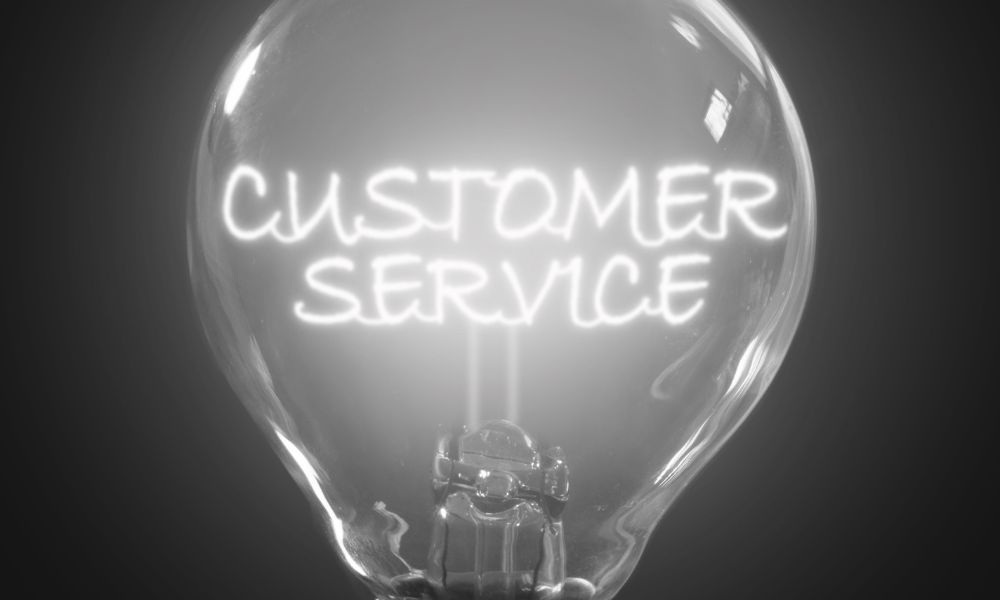
If you’re wondering how to improve customer retention, win accolades in online reviews and forums, or gain enthusiastic customer referrals, it’s time to work on your customer service strategy. Customer service is a vitally important component of your business’s overall reputation. It not only impacts how customers feel about your business, but also how your employees see the company they work for. It’s not just about feelings, however. Customer service directly impacts your business’s bottom line. When you deliver great customer service, you’ll find it easier to keep the customers you already have. They’ll also be eager to refer friends and associates, attracting new customers.
Facing tough competition in your market? Customer service could be the differentiating factor that sets your business apart from the pack. Tired of a race to the bottom when it comes to pricing? People are prepared to pay more when they can be confident about your service. Additional advantages include staff members who are motivated because they are part of an organisation that delivers value to its customers. You may experience lower staff turnover, and a better capacity to attract top talent. In addition, being customer focused means that your business will be committed to quality and efficiency. Once again, this impacts profitability and competitiveness. Gearing up to serve customers efficiently also means improving efficiencies throughout your business. All in all, a customer service strategy has more far-reaching impacts than many people realise. Great results come from great strategies.
Read more about creating a customer service strategy.
Customer Service Management
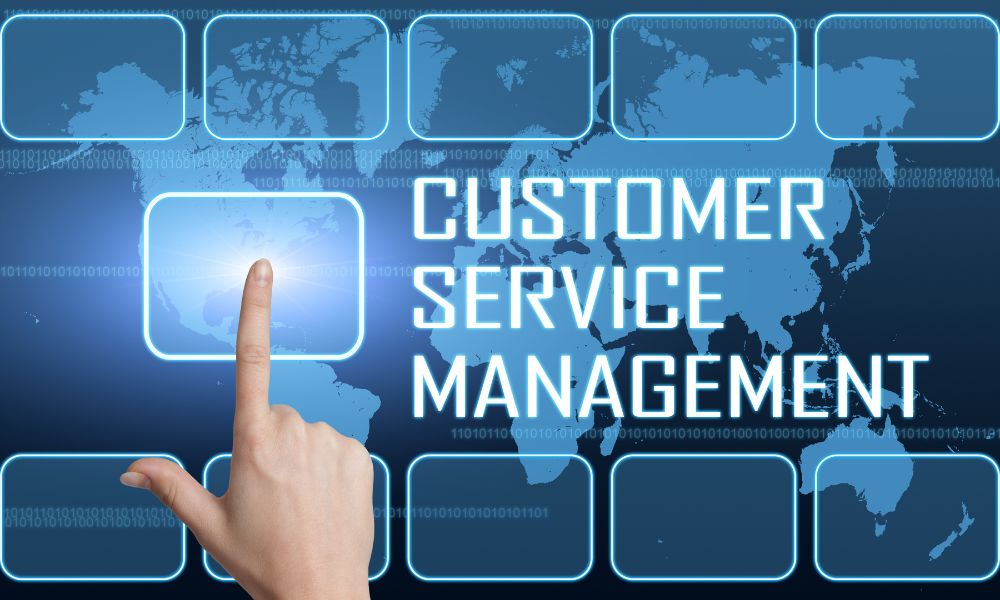
Customer service management focuses on customer needs, coordinating customer service-related activities across internal departments. It deploys people and technology to serve customers, and strives for continuous service improvement. There are overlaps between customer service management and customer relationship management. However, the focus is different. Customer service management focuses on processes that resolve customer queries and issues. Customer relationship management is much broader and includes matching sales and marketing activities to customer profiles. Thus, CSM has more immediacy while CRM is longer-term. Needless to say, it’s impossible to build good customer relationships without strong customer service.
Effective customer service management ensures that customers receive priority attention. Many customers are happy to begin by interacting with resource bases and automated customer service features. However, if they want to talk to a human, they should be able to do so at any time they please. When they do decide to interact with representatives, they will expect open channels, rapid responses, and empowered, knowledgeable assistance. The challenge in customer service management is to achieve a blend between technology and human resources that match or exceed customer expectations. Customer convenience and satisfaction takes precedence at all times, and without this mindset, businesses will fail to provide satisfactory service.
Read more about customer service management.
How to Improve Customer Service

Great customer service is one of the top ways to win hearts and minds. If your service is head-and-shoulders above that of your competitors, you’ll even find that you get real customer loyalty, with customers returning for more of what you offer and referring their friends. Finding out how to improve customer service, and implementing that knowledge, could be one of the most important strategic initiatives you’ve ever undertaken.
Customer service isn’t just about understanding people and making them feel valued. It also requires intimate knowledge of the technical side of your business. Provide regular training and refresher courses to ensure that your staff knows how to help clients with practical problems. Get feedback from line managers and staff, and show them that you think their work is important by holding customer service review sessions. Build a customer-focused team culture that recognises the customers as their reason for being.
Read more about improving customer service.
Customer Service Skills

What are the key skills needed for customer service? While some of them may be obvious, others are a little less so – and not all of them can be imparted through training. Great customer service agents need much more than a formula for dealing with customers in order to represent your business effectively. It’s easy enough to teach customer service workers to avoid using certain words and phrases and to use others instead. But it’s a simple matter for your customers to see the difference between a facade and a genuinely positive attitude. Ideally, positivity should come naturally, and if it’s there, positive language use becomes second nature. While positivity is one of the most important skills in customer service, it’s not something you can extract from someone who doesn’t love helping people and who doesn’t feel proud to represent your company.
Communication is an essential customer service skill. But communication is so much more than just a way to deliver messages. It begins when the customer has an idea, which they then encode into language and deliver. As a good communicator, your customer service worker knows how to decode that message, including any unspoken nuances. Communication skills can be learned, but some people master it more easily than others. Of all the skills in customer service, product knowledge is the easiest to learn. As an employer, you should ensure that onboarding and training involve a process in which your hires acquire extensive product knowledge as a basic skill required for customer service.
Read more about customer service skills.
Active Listening Skills for Customer Service

Active listening is an excellent skill that will help you in interpersonal relationships of every kind. When it comes to your customer service, it’s an absolute must. Mastering active listening techniques will make you a better communicator. You’ll understand people better and be quicker to help them get the answers they’re looking for. If there’s any form of tension, listening actively will help to defuse the situation. When you’re making an effort to fully understand your clients and are demonstrating interest in their welfare through active listening, you will come across as being likeable, understanding, and efficient.
There are various active listening exercises that you can do alone or with a group of other people. For example, a group of people can each answer the same question from their perspective. As a member of the group, the challenge is to focus on what’s being said rather than on what your answer to the question will be. However, building good habits takes practice, and you probably won’t be on an active listening course or in group activities every single day. Evaluate your progress with active listening by giving yourself a little assessment after each interaction with customers.
Read more about active listening skills for customer service.
Empathy in Customer Service

Looking to use AI in customer service? There’s one vital ingredient it lacks, and that’s empathy: the ability to understand emotions and respond appropriately. This can lead to already-frustrated or angry customers becoming even angrier and more frustrated. If you’ve ever tried talking to a bot and ended up insulting it in every way you deem possible, you’ll know what we’re talking about.
Of course, chatbots and AI have their place, but if you want to gain a reputation for taking good care of your customers, it should always be easy for them to talk to another human being. When they do, the person representing your company should exercise empathy. Apart from dealing with the issue at hand, customers want your representatives to understand how they feel and respond appropriately.
This is more difficult than it sounds. For example, there are nuances like understanding the difference between empathy and sympathy in customer service. The former means understanding their feelings while the latter means showing pity or sorrow and can all-too-easily come across as patronising.
Read more about empathy in customer service.
Collecting Customer Feedback
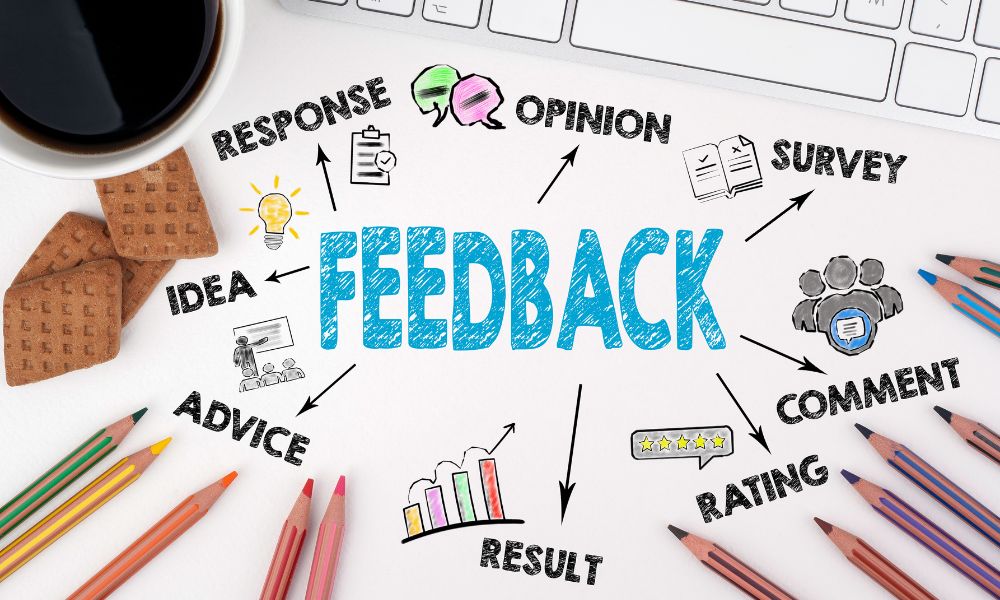
Looking to boost your sales and build an even better business reputation than you already have? There’s no need to stretch your imagination when you have customer feedback and ideas to work with. We love to talk about exceeding customer expectations, but most customers would be perfectly happy if you simply met them. All too often, businesses think they know what customers want, but fail to make use of customer feedback as a valuable source of intelligence. If you’re sending out customer satisfaction surveys, you might think you’re getting a clear picture of the average customer’s experience with your business, but are you really?
For example, a customer might say they would recommend your business to friends and family, but that doesn’t necessarily mean that you know why they reached that conclusion. It could simply be a matter of your product being the best solution currently available. If your competitors can match this, the response might change. All the same, even simple surveys, though somewhat flawed in their scope and detail, do provide some level of customer feedback.
Read more about collecting customer feedback
How to Deal With Angry Customers

No matter how good your business is and how hard you try to keep them all happy, there will be times when your customers get angry. Angry customers can be terribly intimidating. Your fight or flight response kicks in. Neither of these adrenaline-fuelled responses is going to help the situation. Begin by recognising that the customer isn’t targeting you as a person. Whether or not their anger is justified, they represent an opportunity rather than a threat. But to realise the opportunity for improvement that they represent, you first need to know how to deal with angry customers.
Angry customers are very likely to make their feelings felt in the most public way possible: that damaging review on Google; what they say to their friends, family, and colleagues; those scathing social media posts – it can become a PR nightmare. So, your first concern may be damage control. Calm the customer. Make them less likely to share their fury for decades to come. But if that’s where it ends, you still missed the real opportunity. The important thing to remember is that most people don’t get angry for no reason at all. So, if your customer is angry, your business must have done something wrong. Finding out what that might be allows you to solve the issue and improve your business.
Read more about dealing with angry customers.
How to Handle Customer Complaints

It’s something you definitely didn’t want: there are customers who are somewhat unhappy about doing business with you. And that might be putting it mildly! To be fair, no business will please everyone all of the time. Most of your customers are happy campers. The ones who complain are probably the exceptions. All the same, you ignore them at your peril. Here’s the sunny side behind that looming customer complaint: every criticism represents an opportunity. Many customers don’t like to air complaints. The ones who speak up are offering you feedback that you’d be willing to pay for, and they’re doing it for free.
Every customer that complains is a Very Important Person. It might be a very angry VIP, but it’s someone who may be able to show you how to improve your business processes. As such, one complaint is worth a thousand affirmations. But, before you can reflect on lessons learned, you need to find out precisely what’s upsetting customers and how you can make things right. It can be a delicate process, but it’s worth doing it well.
Read more about handling customer complaints.
Customer Communication
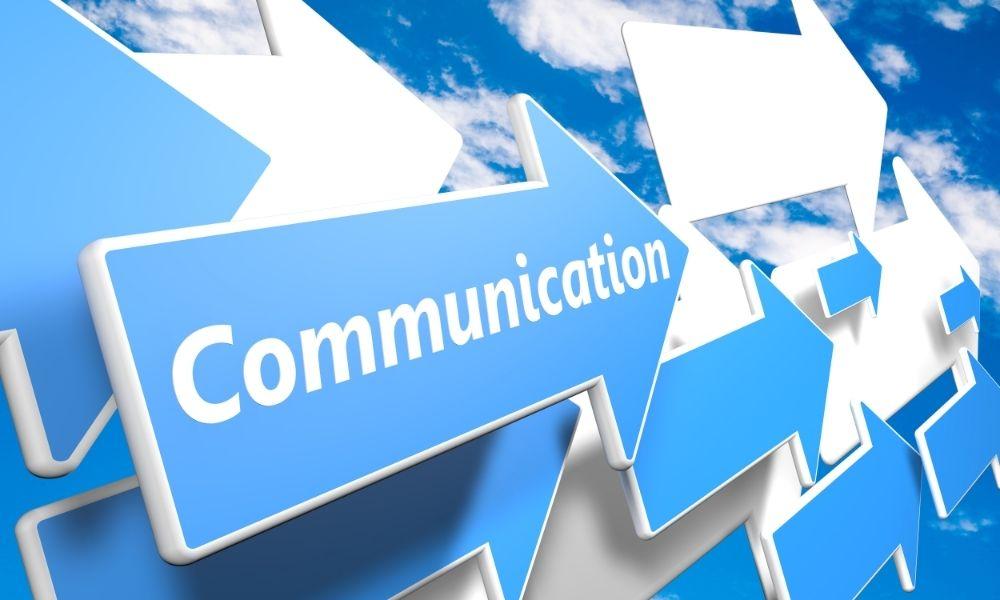
The benefits of good communication with customers are easy to see. Nevertheless, let’s run through the big ones. Done well, your communications strategy gains new customers, helps you retain existing customers, improves perceptions of your brand, reinforces the image you want your brand to convey, and deepens customer engagement and loyalty. Customers are free to say what they like, but everything your business communicates to its customers must be aligned with your policy, strategy, and brand. That means having an in-depth understanding of all communications – from web pages and ads to billing communications and customer support interactions.
Your communications methodology requires specific skill-sets depending on where it’s applied. For example, some people have great writing skills, while others have the verbal dexterity to handle communications on the fly. Some folks are experts at visual messaging, but may not do as well when asked to write or speak. The right communication skills in customer service depend on where they’re to be deployed. In implementing your customer communications strategy, knowing your people is just as important as knowing your customers.
Read more about customer communication.
Customer Centricity

Customer centricity means placing your customers at the core of your business. While this might sound sensible, few businesses really do it. In practice, they often see their special expertise as being “core” with customers at the periphery and customer service as a “support function” rather than a core process. The idea behind customer-centricity is that your business focuses on customer satisfaction, building customer loyalty, and creating strong relationships between your business and its customers.
The first basic principle of a customer-centric strategy is that customers are core. They’re part of your business rather than outliers. You express this through a focus on understanding your customers, anticipating their needs, and making interactions with your business both easy and pleasant. In short, you design your business around your customers and you cater to their perspectives on what your business ought to be. So, instead of trying to shape your customers to fit your business, you shape your business to fit your customers. Simple as that may sound, it’s rarer than you might have expected.
Read more about customer centricity.
Increasing Sales Through Customer Service

Sales through service means providing customer service that results in bigger sales, but it’s not just a trick to make customers dig deeper. Instead, it’s a process that helps your clients experience greater satisfaction. Getting those extra sales through customer service requires a sensitive approach. Without it, you’re at risk of earning an awkward reputation as being “pushy.” To avoid this, your customer service agents should have a clear understanding of situations in which there are opportunities for upselling or offering extras. Motivate them to act on this by showing them that in doing so, they’re actually providing better service rather than simply pushing for bigger sales.
Of course, a well-trained and skilful team is needed to implement sales through service techniques effectively. They shouldn’t just be good at delivering a sales pitch. They need to listen carefully to their customers and have the ability to match products to individual needs. Understanding these means paying attention to feelings as well as facts – customers don’t always know the terms they should use to describe their requirements.
Read more about increasing sales through customer service.
How to Build Better Customer Relationships

Building customer relationships can be easy when you’re serving a relatively small customer base. You may know your clients by name, and remember their preferences instantly. But as your business grows and you start serving a larger pool of clients, things become more complicated.
A great customer experience might leave your customer feeling good, but it isn’t a relationship yet. By ensuring that your customers enjoyed early interactions with your business, you’ve built a foundation of trust, but you have to keep up the good work.
That includes things like showing you care, following up to check whether they’re satisfied, listening to their feedback and acting on it, and giving them service that’s even better than anything they expected. Reward their trust with consistency, and you have a relationship that might stand the test of time – as long as you keep doing your bit.
Read more on how to build better customer relationships.
Customer Insights
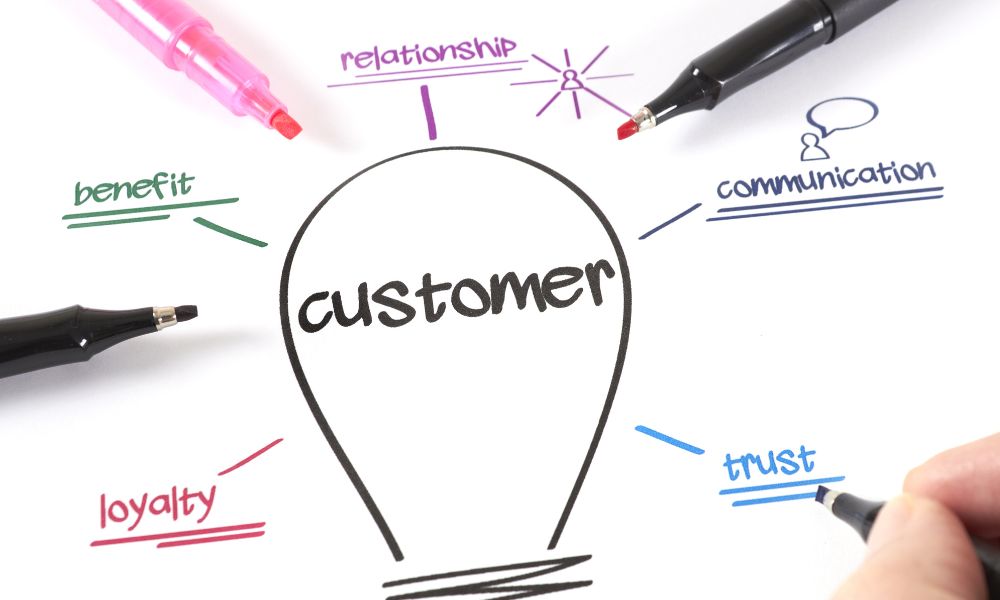
Customer insights are truths one can discover about customers by observing how they behave, analysing data, and listening to what they say. Businesses can use these customer insights to guide their strategies, including new product development, marketing approaches, and to identify ways to enhance the customer experience. Simply put, customer insights help us to get to know our customers better. They help us to understand customer needs, why and what they buy, and what they prefer when interacting with our businesses.
There are multiple sources we can turn to for customer experience insights, and each of them is important. Simply knowing there is demand for a product or service isn’t enough. If we do not offer our customers positive experiences, they will look for alternatives. In a competitive world, it is very likely they will find other options.
Read more about customer insights.
Customer Satisfaction

Customer satisfaction, sometimes abbreviated as CSAT, is a far deeper concept than it may seem on the surface. The definition is simple enough. Customer satisfaction relates to how satisfied your customers are with the goods or services you offer, the way they experienced customer service and the general efficiency of your company. The importance of customer satisfaction can’t be overstated. It’s the basis of your company’s reputation within its market, and it will have a direct impact on how profitable your business is. Gaining new customers requires financial investment, and having used your resources to get them, you’d like to keep them.
There’s a good chance that satisfied customers will give you repeat purchases, raising the lifetime value of each customer acquired. And, if they think you’re worth supporting, they’ll mention you to friends and associates who have similar needs. A recommendation from someone they know carries weight since it’s motivated by a spirit of helpfulness rather than the promise of profit. A person who makes a recommendation has experienced the business from a customer’s perspective – and that makes it seem more trustworthy than anything you might say about your business yourself.
Read more about customer satisfaction.
Customer Satisfaction

The Customer Satisfaction Index (CSI) is a far more specific way of measuring customer satisfaction than the similar-sounding CSAT score. As you’ve probably guessed, CSI measures how satisfied your customers are, but the most important thing about it is that it’s built on metrics of the key things about your business that matter to your customers.
Because it is composed of several elements, you can even produce scores that place greater emphasis on an element that’s crucial to overall customer satisfaction. Overall, your customer satisfaction index not only indicates how happy your customers are, but also shows you what makes them happy.
Read more about the customer satisfaction index.
Customer Engagement

It would be easy to believe that customer engagement is an indicator of how interested customers are in your business, but that would be only half of the answer. The truth is that customer engagement is a relationship, and as such, it’s a two-way street. In short, your customers won’t be interested in you if you aren’t interested in them and their needs.
That’s why most definitions of customer engagement speak about the activities you undertake to create engagement. It’s a relationship that’s built on customer experiences, and develops beyond initial purchases. Not sure where to begin? Understanding what customers want is a good start. Customer engagement strategies help you to develop business relationships that feel very personal, regardless of how many customers you serve. You probably have an instinct for relationship-building already, but looking at what customers prefer can help to guide your strategies. Keep these principles in mind as you work to transform your business from a means to an end to an “old friend” whom your customers trust.
Read more about customer engagement.
Call Handling Skills for Excellent Customer Service

Call handling skills are essential for good customer service, but they don’t always enjoy the recognition they deserve. Effective call handling requires more than just technical knowledge. It requires superb communication skills and the ability to make each caller feel like a VIP. When you’re answering the phone all day long, it can be hard to sound energetic and ready to help, but that’s just what you need to do. The first impression your customer has is of your tone of voice and initial greeting.
Effective call handling requires a range of skills that are not always valued as they should be. And although sincerity goes a long way, there’ll be times when you will even need to be something of an actor. After all, you may have to deal with recurrent, routine queries, and the last thing you should do is sound as bored as you might feel. You may also find yourself in the uncomfortable position of having to deal with irate clients, not all of whom will express themselves with due moderation. Even if you’re furious, you need to sound calm, in control, and absolutely professional.
Read more about call handling skills for excellent customer service.
Customer Service Outsourcing

You respect your clients, and you do everything you can to provide them with products that will satisfy their needs, but you and your teams have full schedules. You know that attending to customer needs is a must, but you’re caught between a rock and a hard place. You might divert resources you need elsewhere to customer service to cover peak demand, leaving other tasks and projects on hold. Or you have dedicated customer service agents who face sudden spikes in customer needs that they can barely cope with alternating with times when they’re just waiting around in case someone needs them.
Could customer service outsourcing be the solution? If you choose the right service provider, it can. They do the work, your customers are thrilled with the service they’re getting, and you get all the credit. You deserve to! After all, it’s your business that attracted those customers in the first place. But can you outsource customer service with confidence, and how does that benefit you and your customers?
Read more about customer service outsourcing.
Considering the Outsourcing Question? Here’s Why You Should Talk to RSVP
We understand your reluctance to entrust your customer service – after all, without your customers, your business wouldn’t exist. That’s why we offer in-house-equivalence, doing as well as your own team can, as a starting point. After that, our next goal is to exceed anything you could have done without us – and our ever-growing portfolio of high-level clients is evidence of our success on that score.
We’re so much more than “just another call centre” and we’re ready to prove our claims. Our London-based call centre employs, trains, and nurtures articulate, creative operatives. Our software keeps you informed on customer service analytics and helps us to join the dots in omnichannel communications. We represent you to the best of our ability – and we have evidence that our best is a cut above the rest.
Let’s work together! We don’t just “answer the phone.” Instead, we’re invested in helping you to achieve your goals and our task is to ensure that you gain a reputation for superb customer service. Opportunity knocks. Will you open the door to customer service excellence? Contact us today!
Read our guide to customer experience (CX).
Read our guide to the omnichannel approach.